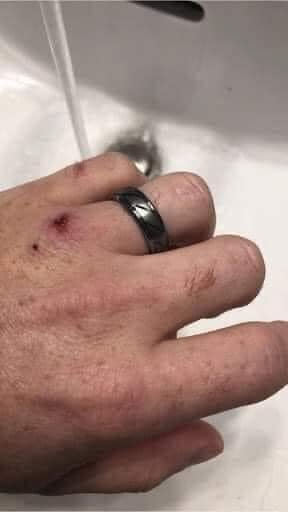Common Causes of Knuckle Injuries and Best Practices for Treatment
Knuckle injuries are surprisingly common, ranging from minor scrapes to more serious bruises or fractures. In many cases, these injuries occur as a result of everyday activities such as accidental impacts, falls, or sports-related incidents. The presence of rings can sometimes exacerbate these injuries, making it important to understand how to treat them effectively and when to seek professional medical help.
Understanding Knuckle Injuries
A knuckle injury typically involves damage to the skin, soft tissue, or bone around the joints of the fingers. These injuries can be classified into various categories:
Scrapes and Abrasions: These are surface-level injuries that often result from hitting the knuckle against a hard object. They may cause pain, redness, or swelling but usually heal on their own with proper care.
Bruising (Contusions): When a knuckle is impacted by a blunt force, blood vessels underneath the skin may break, leading to bruising. This can cause discoloration, swelling, and pain but typically resolves within a few days.
Lacerations: Deeper cuts on the knuckle can occur due to sharp objects. These may require stitches if the cut is deep enough, and infection can be a concern.
Fractures and Dislocations: In more severe cases, the bones in the hand or finger may fracture or dislocate. This often occurs in sports injuries or when the hand is used to block or strike something. Medical intervention is needed for proper realignment and healing.
The Role of Rings in Knuckle Injuries
Wearing rings can sometimes increase the severity of knuckle injuries, especially if swelling occurs after an impact. Rings may constrict blood flow, cause further discomfort, or even become stuck, necessitating emergency removal. In extreme cases, this can lead to a condition called ring avulsion, where a ring pulls at the soft tissue and skin, leading to serious damage.
Treatment of Knuckle Injuries
The appropriate treatment for a knuckle injury depends on its severity. Here’s a breakdown of basic first aid steps and treatment approaches:
Cleaning the Wound: For cuts, scrapes, or abrasions, the first step is to clean the area thoroughly with water and mild soap. It’s important to remove any dirt or debris to prevent infection. If bleeding is present, applying gentle pressure with a clean cloth can help control it.
Reducing Swelling: Applying an ice pack to the injured knuckle can help reduce swelling and minimize pain. Ice should be wrapped in a cloth to avoid direct contact with the skin and applied for 15–20 minutes at a time.
Bandaging the Injury: For open wounds or abrasions, covering the area with a sterile bandage or dressing will protect it from infection. Changing the dressing regularly is essential to keep the wound clean and dry.
Over-the-Counter Pain Relief: Non-prescription medications such as ibuprofen or acetaminophen can be used to manage pain and reduce inflammation.
Seeking Medical Attention: If the injury involves deep cuts, excessive bleeding, visible deformities, or severe swelling, it’s important to consult a healthcare professional. Fractures or dislocations may require X-rays, immobilization, or even surgery in severe cases.
👇 To continue reading, scroll down and click Next 👇
ADVERTISEMENT

